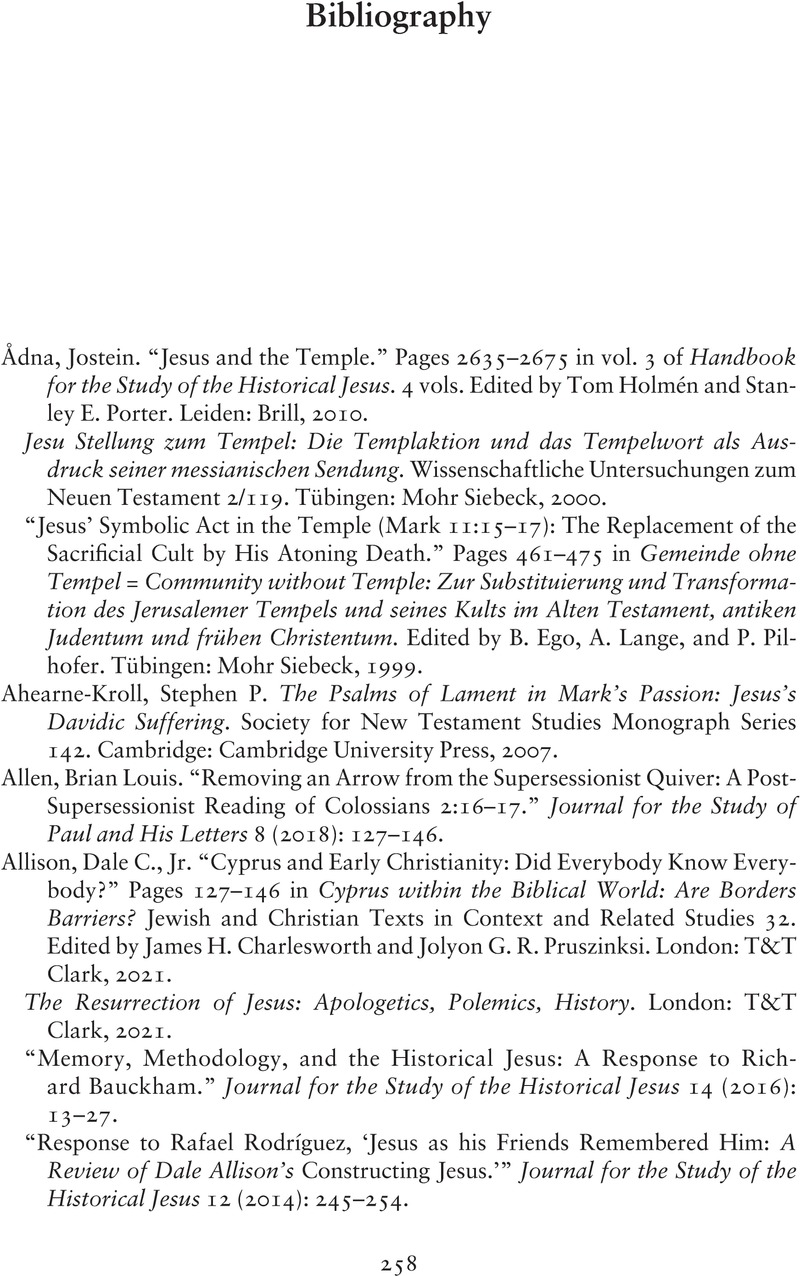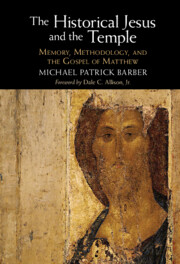Book contents
- The Historical Jesus and the Temple: Memory, Methodology, and the Gospel of Matthew
- The Historical Jesus and the Temple
- Copyright page
- Dedication
- Contents
- Foreword
- 1 Introduction
- 2 The Demise of “Authenticity” and the Challenge of Methodology
- 3 Jesus and the Jerusalem Temple
- 4 Jesus and the Destruction of the Temple
- 5 Jesus, David, and the Temple
- 6 The Son of David and the Temple-Community
- 7 Jesus, Sacrifice, and Priesthood
- Concluding Thoughts
- Appendix: Matthew within Jewish Partings
- Acknowledgments
- Bibliography
- Index of Primary Sources
- Index
- References
Bibliography
Published online by Cambridge University Press: 27 April 2023
- The Historical Jesus and the Temple: Memory, Methodology, and the Gospel of Matthew
- The Historical Jesus and the Temple
- Copyright page
- Dedication
- Contents
- Foreword
- 1 Introduction
- 2 The Demise of “Authenticity” and the Challenge of Methodology
- 3 Jesus and the Jerusalem Temple
- 4 Jesus and the Destruction of the Temple
- 5 Jesus, David, and the Temple
- 6 The Son of David and the Temple-Community
- 7 Jesus, Sacrifice, and Priesthood
- Concluding Thoughts
- Appendix: Matthew within Jewish Partings
- Acknowledgments
- Bibliography
- Index of Primary Sources
- Index
- References
Summary

- Type
- Chapter
- Information
- The Historical Jesus and the TempleMemory, Methodology, and the Gospel of Matthew, pp. 258 - 284Publisher: Cambridge University PressPrint publication year: 2023



